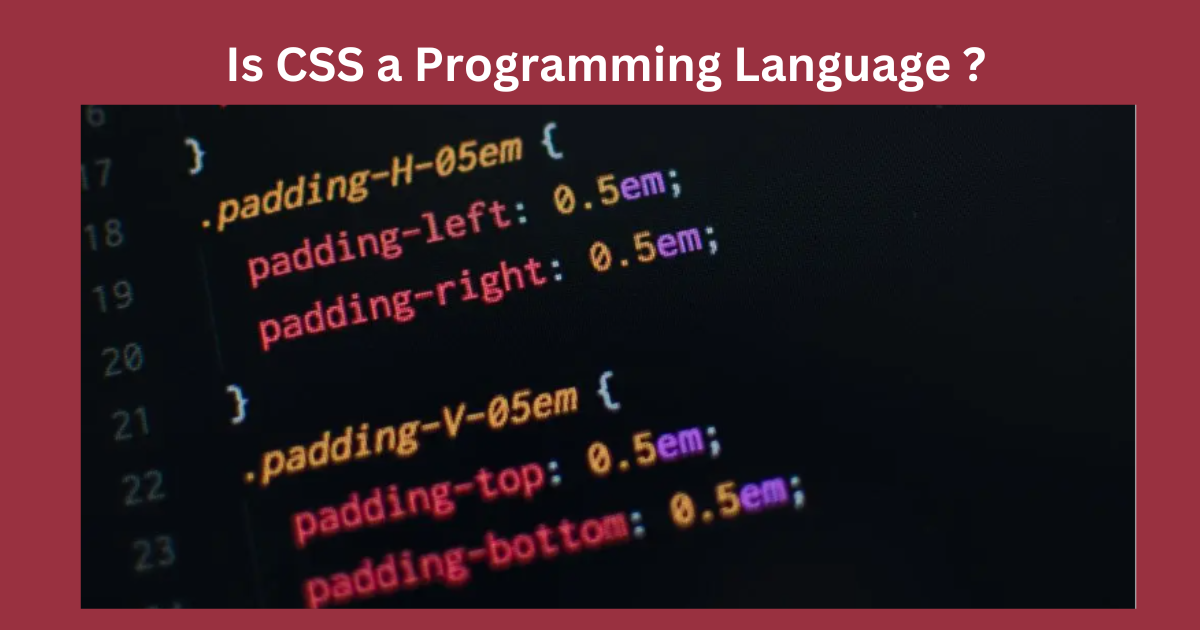In the world of web development, CSS (Cascading Style Sheets) plays a vital role in designing and styling web pages. It is a fundamental technology that allows developers to control the look and feel of a website. However, there has been an ongoing debate about whether CSS qualifies as a programming language.
Table of Contents
ToggleUnderstanding CSS
To understand CSS better, it’s essential to recognize its relation to HTML and web development as a whole. HTML provides the structure and content of a webpage, while CSS determines how that content is presented and styled. Without CSS, web pages would lack the aesthetic appeal we are accustomed to and appear rather dull.
Characteristics of a Programming Language
Before determining whether CSS can be classified as a programming language, let’s examine the key characteristics that define a programming language. Programming languages have the ability to manipulate data, perform calculations, and execute algorithms. On the other hand, markup languages like HTML primarily provide instructions for displaying content.
Differentiating between a programming language and a markup language
CSS falls into the category of a markup language since its main purpose is to specify the appearance of content. While CSS does possess a certain level of complexity, it lacks the data manipulation and algorithmic capabilities seen in true programming languages. To handle complex logic and data manipulation, CSS relies on other languages like JavaScript.
Evaluating CSS
When examining CSS from the perspective of a programming language, it becomes evident that its primary focus lies in styling and presentation, rather than data manipulation or algorithmic operations. Although CSS does exhibit a certain level of complexity, it may not encompass the complete range of capabilities typically associated with a traditional programming language.
Arguments against CSS as a Programming Language
There are several key arguments against CSS being classified as a programming language:
- Lack of computational capabilities: CSS does not possess the ability to perform calculations or execute algorithms.
- Absence of variables and data manipulation: Unlike programming languages, CSS does not facilitate the manipulation of data or the use of variables.
- Reliance on HTML structure for functionality: CSS heavily relies on the underlying structure and content of HTML to apply styles. Without HTML, CSS would be ineffective in achieving its purpose.
Expert Opinions and Debates
The question of whether CSS qualifies as a programming language sparks varying viewpoints among web developers and programmers. Some believe that CSS demands problem-solving skills and logical thinking, offering a case for its classification as a programming language. On the other hand, there are those who argue that certain limitations in CSS restrict it from being regarded as a true programming language. This ongoing discussion underscores the nuanced and complex nature of CSS in the realm of web development.
Notable views regarding CSS as a programming language
The ongoing discussion surrounding CSS’s classification as a programming language has attracted insights from prominent figures within the programming community. On one side, there are those who advocate for CSS to be officially recognized as a programming language, citing its complexity and significant role in web development. Conversely, there are voices emphasizing the need to acknowledge the distinct differences that set CSS apart from traditional programming languages. This diverse range of opinions underscores the depth and complexity of the topic under consideration.
Importance in designing and styling web pages
CSS serves as a crucial tool for designers and developers to create visually appealing websites. It allows for the customization of elements such as fonts, colors, backgrounds, and layouts. With CSS, web pages can be transformed into captivating and user-friendly experiences, enhancing the overall usability and engagement of the website.
Frequently Asked Questions on CSS
CSS is not considered a traditional programming language as it lacks computational capabilities and the ability to manipulate data.
CSS is not designed for logic-driven functions. It focuses on styling and presentation, relying on other languages like JavaScript for more complex tasks.
CSS and JavaScript have distinct programming approaches. CSS focuses on styling and presentation, while JavaScript enables logic-driven functions, data manipulation, and interactivity.
CSS is specific to web development as it is closely tied to HTML and web page styling. Its uses are primarily limited to web-related projects.
To master CSS programming, resources such as online tutorials, documentation, and interactive coding platforms can be invaluable. Websites like W3Schools, CSS-Tricks, and MDN Web Docs offer comprehensive guides and examples to enhance one’s understanding of CSS.
Conclusion
To conclude, CSS holds a crucial position in the realm of web development, yet it does not fit the classification of a traditional programming language. Its core function revolves around styling and presenting content, rather than performing data manipulation or algorithm execution. Nonetheless, it remains essential to acknowledge the profound impact of CSS in crafting visually captivating and attractive websites.



